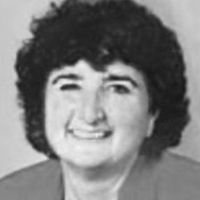This text-based course is a transcript of the webinar, “Risk Factors for Aspiration Pneumonia -Who Gets Sick?” presented by Angela Mansolillo, M.A., CCC-SLP, BRS-S.
>> Angela Mansolillo: As you look at the objectives, the first thing we want to understand is what exactly is aspiration pneumonia? It is a harder question to answer than it sounds. We will talk about how different physicians define the term aspiration pneumonia, and then we will discuss what some of the risk factors are for aspiration pneumonia. We know that for aspiration, swallowing disorder/dysphagia, is a risk factor, but you will see that there are a number of other things that we have to consider as we look at our patients who are aspirating if they may or may not be at high risk for aspiration pneumonia as a result. Finally, we will talk about some strategies that we can do to address some of those risk factors that are modifiable. Some of them are not, but some of them are things that we can have an impact on.
Pneumonia Statistics
We know that pneumonia is a problem. Any of us who work in any sort of healthcare setting are aware that there is a lot of pneumonia. The following are some statistics that looked just at Medicare beneficiaries. This was an older population. You can see that we spend a lot of healthcare dollars every year managing caring for people who have pneumonia. When pneumonia is acquired during the course of someone's inpatient stay or stay in a skilled nursing facility, it adds quite a bit of cost to the care. The mortality rates are fairly high at 6.2% for Community Acquired Pneumonia (CAP) over 13% for Healthcare Acquired Pneumonia (HCAP) (Parks et al, 2012). Those mortality rates, like many things, increase as people get older.
What is Pneumonia?
Let's talk about what it means when we use the terms pneumonia, Community Acquired Pneumonia, and aspiration pneumonia. In general, pneumonia is defined as a lung infection. It can be caused by any number of things such as viral agents, bacteria, and occasionally by fungal agents. Most pneumonias are viral or bacterial or some combination. I am sure the symptoms are familiar to you and those include: cough, fever, increased respiratory rate, increased respiratory effort. Some patients will complain of chest pain and in some cases, when the pneumonia is severe, we could have reduced level of consciousness or respiratory failure as a result. What is happening in the lungs when this infection occurs is the alveoli become inflamed. You have an infectious process and an inflammatory process. Remember the alveoli are the parts of the lung where the gas exchange occurs. If the alveoli are not functioning in the way that they should, our ability to perform the basic functions of respiration becomes impaired. The epithelium gets thick. We see lower surfactant production. Surfactant is a foamy fluid in the lungs that helps to keep the alveoli open and available for that gas exchange. The infectious material starts to accumulate in the open spaces in the lungs. As the infection grows, as the area of infiltrate grows, the area that is available for gas exchange diminishes. Respiration becomes more and more difficult to perform.

